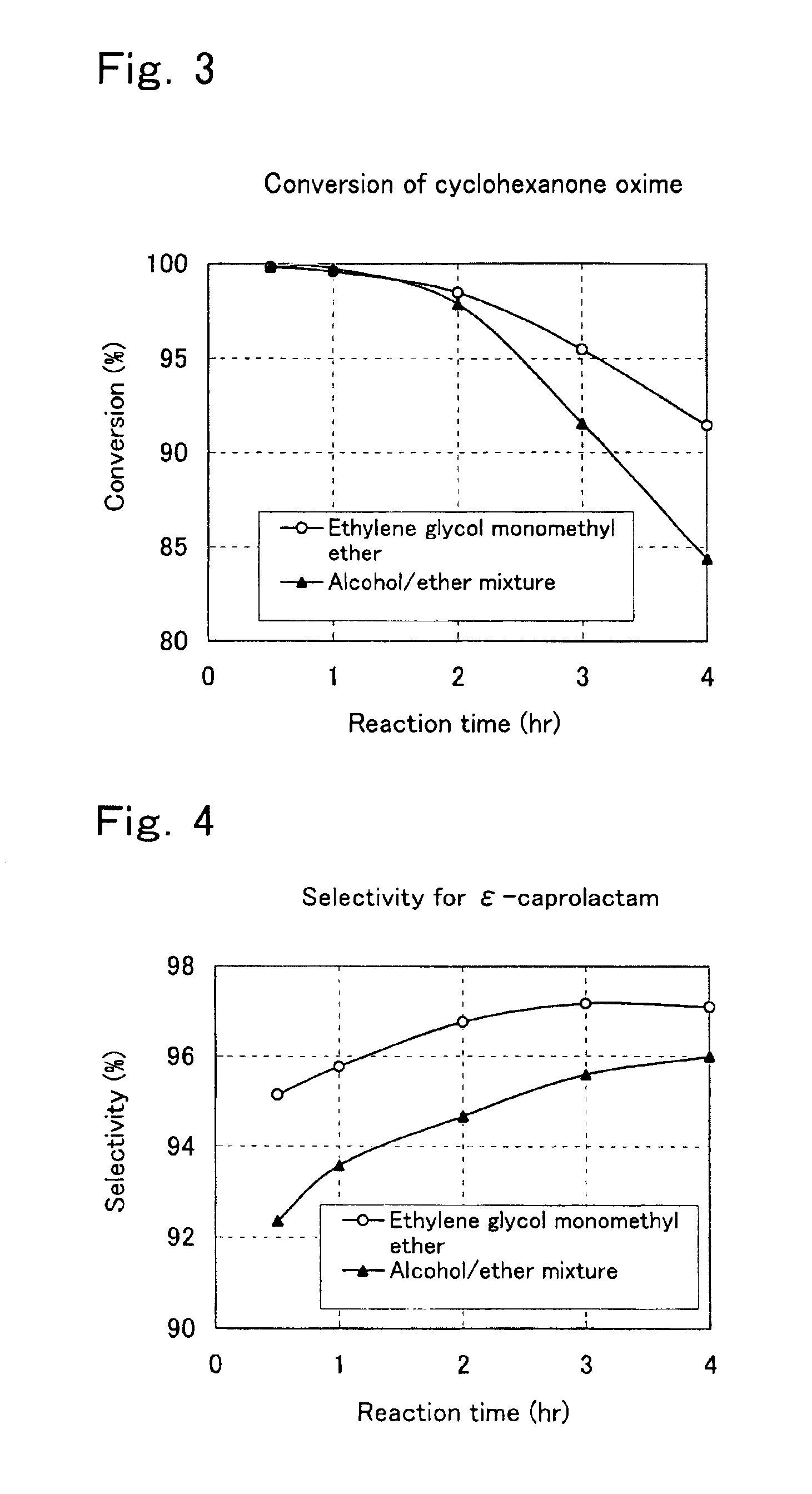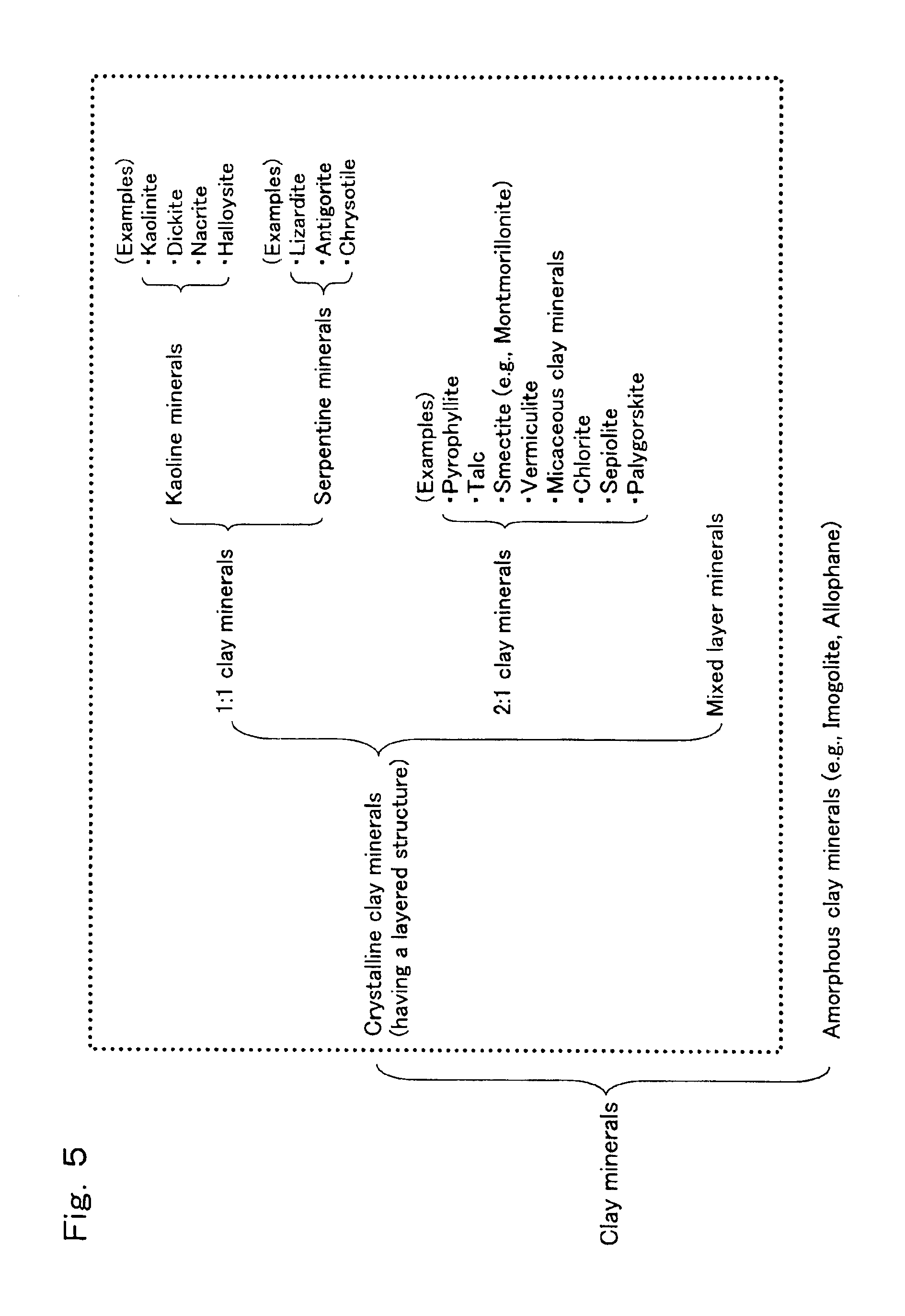Process for preparation of epsilon-caprolactam
a technology of epsilon and caprolactam, which is applied in the field of producing epsilon caprolactam, can solve the problems of corroding the reaction apparatus by the oleum, difficulty in forming into a desired morphology, and difficulty in solving problems, so as to achieve the effect of suppressing the deterioration of the catalyst, remarkably prolonging the life of the catalyst, and suppressing the occurrence of side reactions by-producing
- Summary
- Abstract
- Description
- Claims
- Application Information
AI Technical Summary
Benefits of technology
Problems solved by technology
Method used
Image
Examples
reference example 1
Preparation of Catalyst (A)
[0203]To 130 g of tetraethyl orthosilicate was added 278 g of ethanol, and thereto was further added 291 g of a 10% by weight aqueous solution of tetrapropyl ammonium hydroxide. The resultant solution was stirred by using a homogenizer at a revolution rate of 5,000 rpm for 30 minutes, and then transferred to a 1-liter autoclave, followed by hydrothermal synthesis at 105 to 110° C. for 150 hours while stirring at a revolution rate of 500 rpm, to thereby obtain a slurry. The obtained slurry was subjected to filtration using a filter, and the resultant filtration residue was washed until it became almost neutral, and the washed filtration residue was dried at 120° C. for 12 hours, to thereby obtain a white crystal. The obtained crystal was calcined in air using an electric furnace at a temperature in the range of from 500 to 550° C. for 6 hours, and the resultant calcined product (zeolite) was subjected to a powder X-ray diffraction analysis as described abov...
reference example 2
Preparation of Catalyst (B) (Catalyst Containing no Crystalline Clay Minerals)
[0211]Catalyst (B) was prepared in substantially the same manner as in Reference Example 1, except that, to 66.7 g of silica sol “SNOWTEX® STN30” (trade name; manufactured and sold by Nissan Chemical Industries Ltd., Japan) were added 113 g of purified water and 20 g of an H type silicalite. The thus obtained catalyst (B) had a composition wherein it comprised 50% by weight of an H type silicalite and 50% by weight of SiO2.
reference example 3
Preparation of Catalyst (C)
[0212]Catalyst (C) was prepared in substantially the same manner as in Reference Example 1, except that a silica sol (hereinafter, referred to as a “high purity silica sol”) having a very small content of impurity metals was used (the high purity silica sol was prepared by the method described in the working examples of Unexamined Japanese Patent Application Laid-Open Specification No. Hei 4-231319 and had an SiO2 content of 30% by weight, a sodium content of 120 ppm by weight or less and a pH value of 10 (that is, the silica sol was strongly basic). The thus obtained catalyst (C) had a composition wherein it comprised 50% by weight of an H type silicalite, 25% by weight of SiO2, and 25% by weight of kaolinite.
PUM
| Property | Measurement | Unit |
|---|---|---|
| pressure | aaaaa | aaaaa |
| temperature | aaaaa | aaaaa |
| diameters | aaaaa | aaaaa |
Abstract
Description
Claims
Application Information
 Login to View More
Login to View More - R&D
- Intellectual Property
- Life Sciences
- Materials
- Tech Scout
- Unparalleled Data Quality
- Higher Quality Content
- 60% Fewer Hallucinations
Browse by: Latest US Patents, China's latest patents, Technical Efficacy Thesaurus, Application Domain, Technology Topic, Popular Technical Reports.
© 2025 PatSnap. All rights reserved.Legal|Privacy policy|Modern Slavery Act Transparency Statement|Sitemap|About US| Contact US: help@patsnap.com



